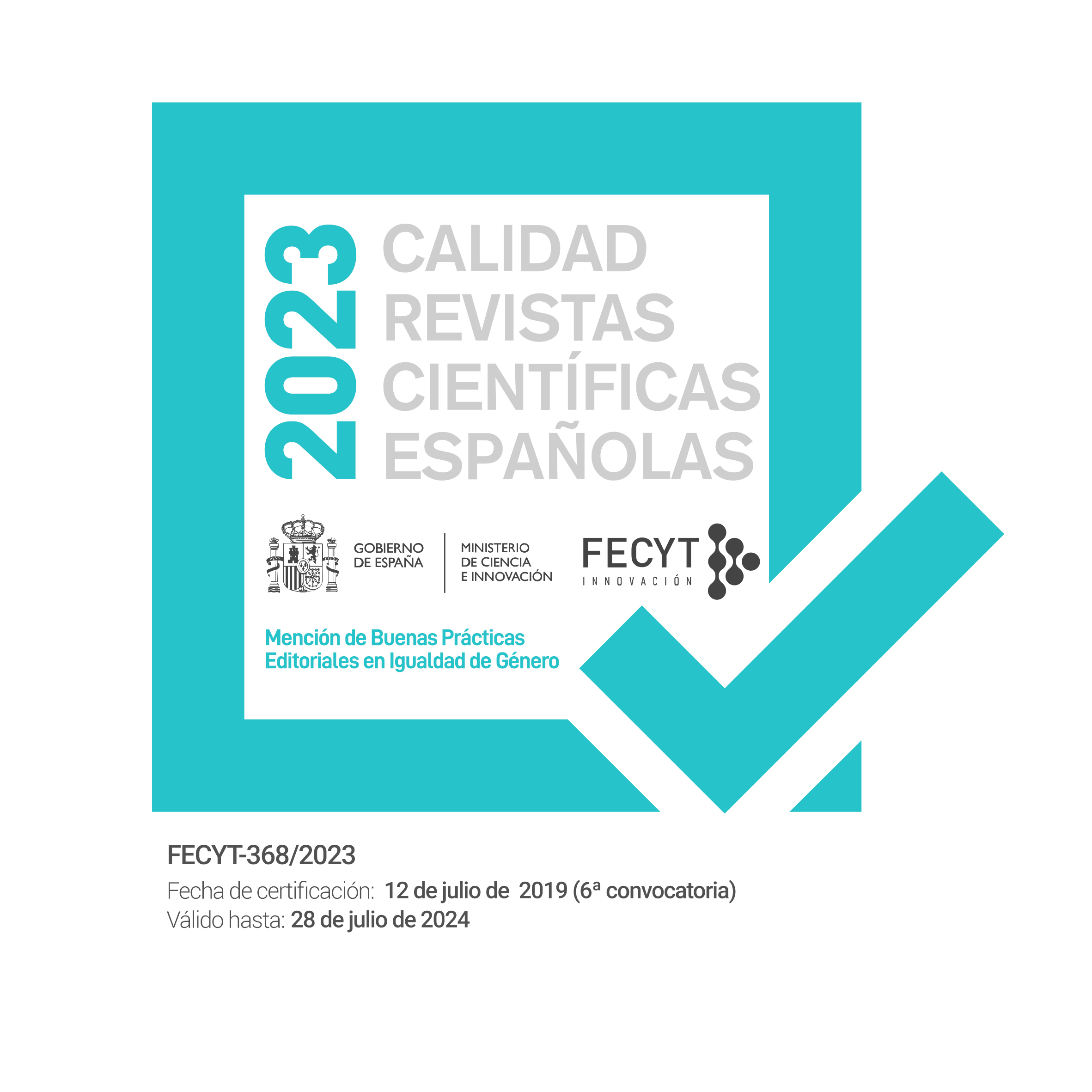Tools for English-Spanish Cross-Linguistic Applied Research
DOI:
https://doi.org/10.18172/jes.135Abstract
Empirically-based, cross-linguistic research should have a central role to play in offering solutions to applied problems. However, this role remains largely unexploited and the transformation of contrastive descriptive findings into useful applications has received little attention. Applied professionals looking for useful and reliable aids to assist them in their cross-linguistic routines see their needs ignored as supplying solutions is not generally considered as part of the research process. Part of the problem derives from the inadequacy of the existing tools for turning declarative knowledge into performative knowledge to serve particular applied purposes. This paper aims at re-defining the role of both new and already existing tools in terms of their contribution to applied research.
Downloads
References
Bank of English. http://www.collins.co.uk/books.aspx?group=153. Visited May 2007.
Bernardini, S. 2000. “Systematising serendipity: Proposals for concordancing large corpora with language learners”. Rethinking Language Pedagogy from a Corpus Perspective: Papers from the Third International Conference on Teaching and Language Corpora. Eds. L. Burnard and T. McEnery. Frankfurt am Main: Peter Lang. 183-190.
Biber, D. 1993. “Representativeness in corpus design.” Literary and Linguistic Computing 8 (4): 243-257.
Bowker, L. and J. Pearson. 2002. Working with Specialized Language: A Practical Guide to Using Corpora. London: Routledge.
Byrne, J. 2006. Technical Translation. Usability Strategies for Translating Technical Documentation. Dordrecht: Springer.
Chesterman, A. 1998. Contrastive Functional Analysis. Amsterdam and Philadelphia: Benjamins.
Connor, U. and T. A. Upton 2004. “The genre of grant proposals: A corpus linguistic analysis”. Discourse in the Professions: Perspectives from Corpus Linguistics. Eds. U. Connor and T. A. Upton. Amsterdam and Philadelphia: Benjamins. 235–255.
Corpus de Referencia del Español Actual. http://corpus.rae.es/creanet.html. Visited July 2007.
English-Norwegian Parallel Corpus (ENPC). http://www.hf.uio.no/ilos/forskning/forskningsprosjekter/enpc/. Visited July 2007.
Flowerdew, L. 2001. “The exploitation of small learner corpora in EAP materials design”. Small Corpus Studies and ELT. Eds. M. Ghadessy, A. Henry and R. L. Roseberry. Amsterdam and Philadelphia: Benjamins. 363-380.
Foraker Design. 2002-2005. Usability First. http://www.usabilityfirst.com/. Links to “Introduction to Usability”. Visited December 2006.
Ghadessy, M., A. Henry, and R. L. Roseberry. 2001. Small Corpus Studies and ELT. Amsterdam: Benjamins.
Hofland, K. and S. Johansson. 1998. “The Translation Corpus Aligner: A program for automatic alignment of parallel texts”. Corpora and Cross-linguistic Research: Theory, Method, and Case Studie. Eds. S. Johansson and S. Oksefjell. Amsterdam: Rodopi. 87-100. Also at http://khnt.hd.uib.no/files/align3.pdf. Visited December 2006.
Hunston, S. 2002. Corpora in Applied Linguistics. Cambridge: Cambridge University Press.
Institut für Maschinelle Sprachverarbeitung (IMS). Visited July 2007. http://www.ims.uni-stuttgart.de/projekte/CorpusWorkbench/.
Institut für Maschinelle Sprachverarbeitung (IMS). Visited July 2007. http://www.ims.uni-stuttgart.de/projekte/corplex/TreeTagger/.
Izquierdo, M., K. Hofland, and O. Reigem. Forthcoming. “The ACTRES Parallel Corpus: an English-Spanish Translation Corpus”.
Kennedy, G. D. 1998. An Introduction to Corpus Linguistics. London and New York: Longman.
Krzeszowski, T. P. 1990. Contrasting Languages. The Scope of Contrastive Linguistics. Berlin and New York: Mouton de Gruyter.
Lowry, R. 1999-2007. Concepts and Applications of Inferential Statistics. http://faculty.vassar.edu/lowry/webtext.html/. Visited November 2006.
McEnery, T. and A. Wilson. 2001. Corpus Linguistics. An Introduction. Edinburgh: Edinburgh University Press.
McEnery, T., R. Xiao, and Y. Tono. 2006. Corpus-based Language Studies: An Advanced Resource Book. London and New York: Routledge.
Orris, J. B. 2006. Megastat®. http://blue.butler.edu/~orris/megastat/index.html. Visited July 2007.
Piao, S. S., P. Rayson, D. Archer, and T. McEnery. 2005. “Comparing and combining a semantic tagger and a statistical tool for MWE extraction.” Computer Speech and Language (Special issue on Multiword Expressions) 19 (4): 378-397. Elsevier. doi:10.1016/j.csl.2004.11.002
Rabadán, R. 2005. “The Applicability of Description. Empirical research and translation tools”. Contemporary Problematics of Translation Studies. Ed. C. Toledano. Special issue of Revista Canaria de Estudios Ingleses 51. 51-70.
Rabadán, R. 2007. “Divisions, description and applications: The interface between DTS, corpus-based research and contrastive analysis”. Doubts and Directions in Translation Studies. Selected contributions from the EST Congress, Lisbon 2004. Eds. Y. Gambier, M. Shlesinger and R. Stolze. Amsterdam and Philadelphia: Benjamins. 237-252.
Rabadán, R. In press. “Refining the idea of “applied extensions””. Beyond Descriptive Translation Studies. In Homage to Gideon Toury. Eds. M. Shlesinger, D. Simeoni and A. Pym. Amsterdam and Philadelphia: Benjamins.
Sinclair, J. 2004. How to Use Corpora in Language Teaching. Amsterdam and Philadelphia: Benjamins.
Sperberg-McQueen, C. M. and L. Burnard. 2004. Guidelines for Electronic Text Encoding and Interchange. XML-compatible edition. http://www.tei-c.org/P4X/index.html. Visited July 2007.
SyncRO Soft Ltd. 2002-2007. http://www.oxygenxml.com/. Visited July 2007.
Toury, G. 1995. Descriptive Translation Studies and Beyond. Amsterdam and Philadelphia: Benjamins.
Zanettin, F. 2000. “Parallel corpora: Issues in corpus design and analysis”. Intercultural Faultlines. Ed. M. Olohan. Manchester: St. Jerome. 105-118.
Downloads
Published
How to Cite
Issue
Section
License
The authors retain copyright of articles and authorize Journal of English Studies the first publication. They are free to share, redistribute, and/or reprint the article without obtaining permission from the publisher as long as they give appropriate credit to the editor and the journal.
Self-archiving is allowed too. In fact, it is recommendable to deposit a PDF version of the paper in academic and/or institutional repositories.
It is recommended to include the DOI number.
This journal is licensed under a Creative Commons Attribution 4.0 International License










